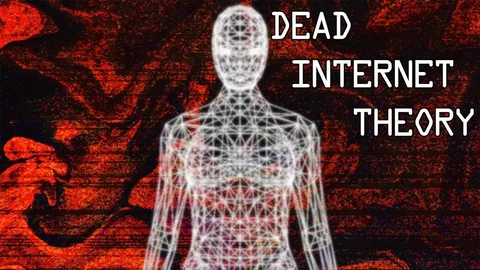In 2025, the specter of the Dead Internet Theory looms larger than ever, fueled by ongoing debates and evolving technological landscapes.
This theory posits a scenario where the internet, as we know it, collapses under its own weight of security vulnerabilities, infrastructural strain, and regulatory challenges.
While it may sound like a doomsday prophecy, recent developments and trends suggest both the potential and the pitfalls of such a scenario.
Current Infrastructure Challenges
As we navigate 2025, the internet’s infrastructure faces unprecedented strain. The exponential growth in data consumption, driven by streaming services, IoT devices, and the burgeoning demands of artificial intelligence, has placed immense pressure on global networks.
Bandwidth limitations, server capacities, and the need for constant upgrades underscore the fragility of our current digital ecosystem.
Security Vulnerabilities
Cybersecurity remains a critical concern. The rise of sophisticated cyber threats, including ransomware attacks on critical infrastructure and the exploitation of vulnerabilities in cloud services, has exposed glaring weaknesses.
As governments and corporations grapple with these challenges, the prospect of a widespread internet blackout becomes less unthinkable.
Regulatory Landscape
The regulatory landscape surrounding the internet continues to evolve unevenly across the globe. Debates over data privacy, net neutrality, and the responsibilities of tech giants to moderate content highlight the divergent approaches taken by different jurisdictions.
These regulatory uncertainties contribute to a fragmented internet governance framework, potentially undermining its stability in the long term.
Emerging Technologies and Paradigms
Conversely, advancements in technology offer glimmers of hope. Innovations in quantum computing promise to revolutionize encryption and data processing capabilities, potentially bolstering cybersecurity defenses.
Meanwhile, initiatives like decentralized web architectures and blockchain technology aim to decentralize control and enhance resilience against centralized failures.
The Human Factor
Beyond the technical aspects, societal attitudes and behaviors shape the internet’s future. From misinformation and digital polarization to the ethical implications of AI and automation, human interactions online play a pivotal role in determining whether the internet evolves into a tool for global empowerment or succumbs to its vulnerabilities.
Conclusion
While the Dead Internet Theory remains speculative, its underlying concerns merit serious consideration. As we progress through 2025 and beyond, navigating the complexities of digital transformation requires concerted efforts in cybersecurity, regulatory coherence, and technological innovation.
The path forward hinges on collective action, adaptive governance, and a commitment to shaping an internet that is robust, inclusive, and sustainable for generations to come. For more Internet technologies-related information check the internetverizons.
